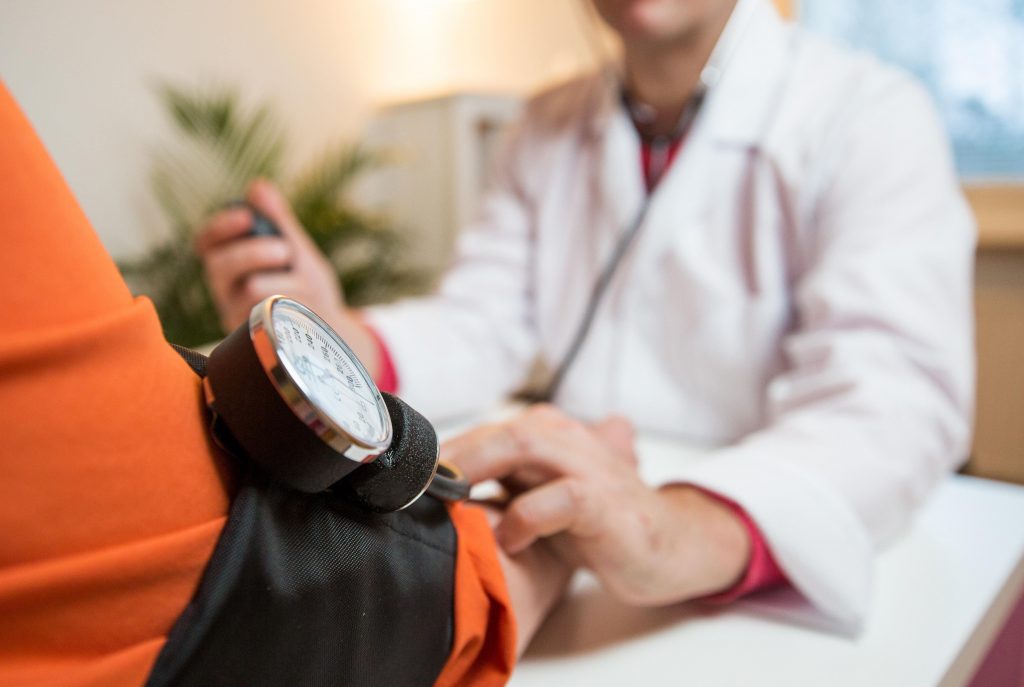
What is a Stroke?
A stroke is a serious life-threatening medical condition where the blood supply to the brain is cut off. Strokes are a medical emergency and prompt treatment is essential in reducing permanent disability and death.
There are 2 main causes of stroke:
- An Ischemic stroke is caused by a blocked artery, due to a build-up of cholesterol in the arteries in a process called atherosclerosis. Another cause of ischemic stroke is an embolism when a blood clot forms in the heart or legs and then travels to the brain.
- A haemorrhagic stroke is caused by a weakened blood vessel that ruptures or leaks blood into the brain.
People with a stroke can present with any of the following: one-sided numbness or weakness in the arm, face and leg; slurred speech; trouble speaking or understanding speech; confusion; vision problems; trouble walking; loss of balance or coordination; dizziness.
Risk Factors of Stroke
Age and Gender
Being older and of the male gender puts you at higher risk of having a stroke. However, up to 80% of risk factors can be controlled to reduce stroke incidence.
High Blood Pressure (Hypertension)
High Blood Pressure (Hypertension) control is the most important risk factor in stroke prevention. Uncontrolled hypertension increases four-fold your risk of stroke. In addition to medication having a healthy diet, reducing your intake of salt and alcohol and exercising regularly are some lifestyle measures that reduce blood pressure.
Smoking
Smoking increases your risk of stroke by two-fold. This risk is significantly reduced as soon as you stop smoking and will be the same as a non-smoker within five years of stopping. Consult your doctor who can help you to stop smoking.
Diabetes
Diabetic patients have 1.5 times more stroke risk. They may also have hypertension, high blood cholesterol and be overweight — increasing their risk even more. A healthy diet, taking medication, weight control and regular exercise are crucial in controlling blood sugar levels.
High Cholesterol
High cholesterol deposits cause the narrowing of blood vessels in your body. Reducing a diet high in trans fats and saturated fats like animal fat, fried foods and processed foods can lower cholesterol levels. Medication can also reduce cholesterol levels.
Heart rhythm disorder
Atrial fibrillation (heart rhythm disorder) increases stroke risks five-fold. This happens when the heart's upper chambers beat incorrectly, allowing the blood to pool and blood clot to form that travels to the brain resulting in a stroke. If you have atrial fibrillation, get treatment to reduce stroke risk.
History of Stroke or Heart Attack
If you have had a previous stroke, Transient Ischaemic Attack (TIA), or heart attack, you are at greater risk than someone who has not had them in the past. A person who has had one or more TIAs is almost 10 times more likely to have a stroke than someone of the same age and sex who hasn't.
Lifestyle
Sedentary lifestyle and excess body weight increase stroke risk. Regular exercise that suits your lifestyle (at least 150 minutes of moderate-intensity every week) helps to reduce obesity and also aids in the prevention and management of hypertension, diabetes and high cholesterol and hence lower stroke risk. Losing as little as 2-4kg can make a significant difference to your stroke risks.




